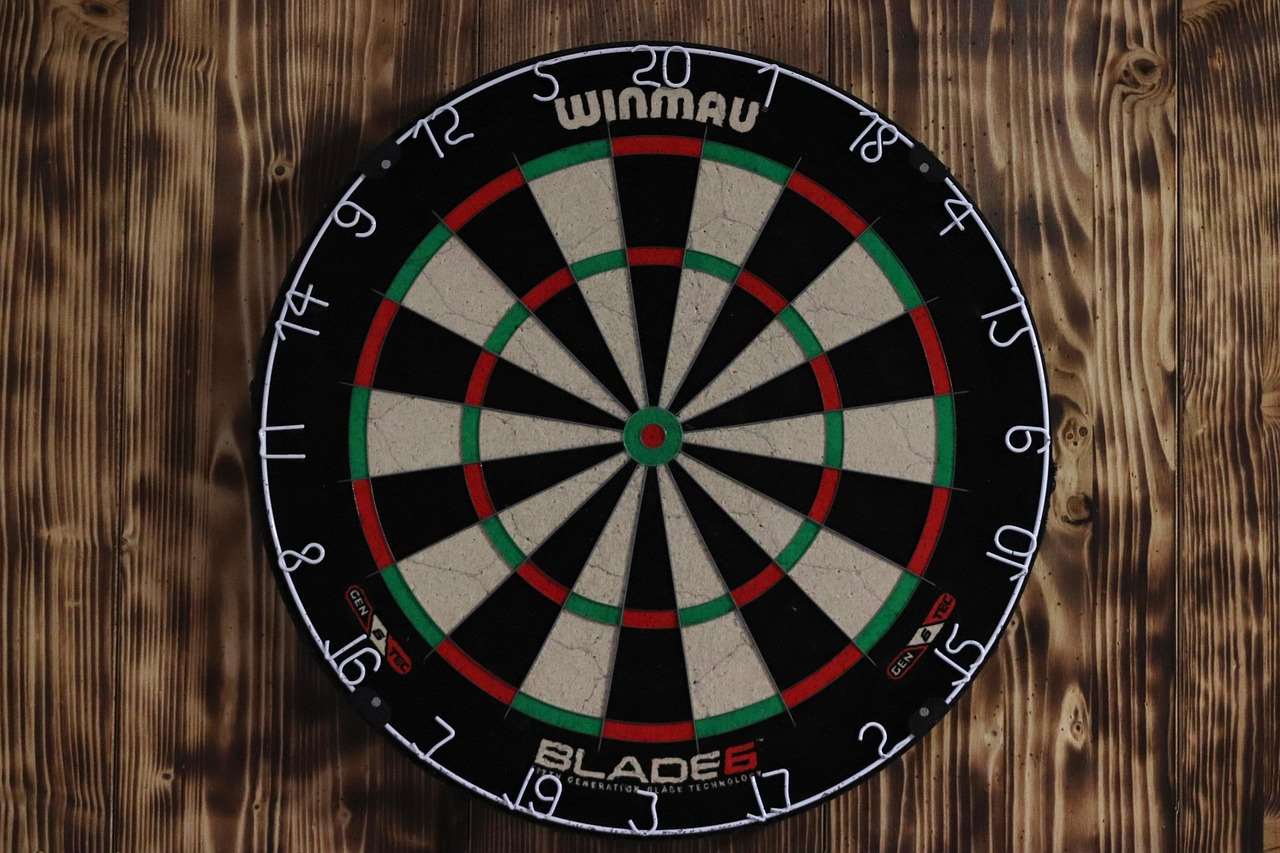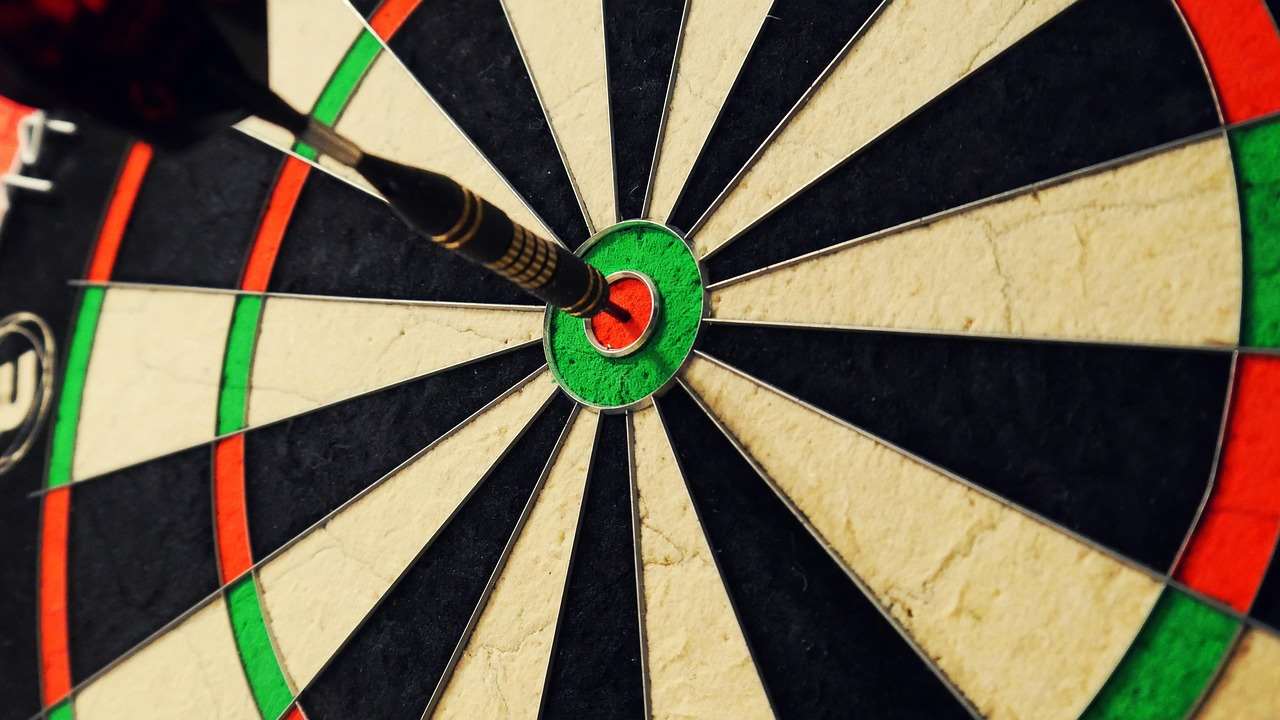The quick answer regarding a darts time limit is that, generally, there isn’t one enforced per throw in professional play, but rather an expectation of reasonable pace, with warnings and potentially forfeits issued for excessive delays. This article explores the nuances of speed of play in darts, what constitutes a delay, and the potential consequences for slow play.
⚠️ Still Using Pen & Paper (or a Chalkboard)?! ⚠️
Step into the future! The Dart Counter App handles all the scoring, suggests checkouts, and tracks your stats automatically. It's easier than you think!
Try the Smart Dart Counter App FREE!Ready for an upgrade? Click above!
Understanding the Unspoken Darts Time Limit
While a hard and fast darts time limit, akin to a chess clock, doesn’t exist in most professional darts tournaments, the speed of play is carefully monitored. Think of it as an implicit understanding, a part of the unwritten rules of the game. Players are expected to maintain a reasonable pace to keep the match flowing smoothly and maintain viewer engagement. This unspoken limit ensures the game remains entertaining and avoids stalling tactics.
Professional darts, especially televised events, are a production. Extended delays between throws can disrupt the flow for both the live audience and television viewers. Ultimately, continuous, egregious delays can lead to warnings from the referee.

What Constitutes a Delay in Darts?
Defining a “delay” is subjective, but there are some common scenarios considered problematic. Excessive chalking of the darts tips, prolonged trips to the oche, or unusually long periods spent contemplating a shot can all raise eyebrows. A player consistently taking an excessively long time could be considered slow playing. Referees are trained to recognize these patterns and intervene when necessary.
Factors that are considered Reasonable:
- Briefly wiping the darts.
- Taking a sip of water.
- Chalking the dart tips.
- Short pauses for concentration.
Factors that could be considered a Delay:
- Extended conversations with the referee or other players.
- Repeatedly leaving the oche without a clear reason.
- Excessive fidgeting or pacing.
- Unnecessarily long pauses to consider a shot, particularly on simple finishes.
Consequences of Slow Play: Warnings and Beyond
If a referee deems a player is deliberately slowing down the game, a warning will be issued. Typically, this is a verbal warning in the first instance. However, repeated or blatant violations can lead to more severe penalties. Continued slow play after a warning can result in the loss of a leg. Even more drastic, persistent stalling could lead to disqualification from the tournament. No player wants to jeopardize their chances, so most professionals are very mindful of maintaining a reasonable pace of play.
The Professional Darts Corporation (PDC) and other governing bodies outline these rules within their regulations. While the emphasis isn’t on rigid timing, the expectation of fair play and a good pace is paramount.
Pace of Play and the Professional Darts Landscape
The speed of play can be influenced by various factors. The pressure of the match, the complexity of the finish, and the player’s individual style all contribute. Some players are naturally faster than others. However, the key is consistency and avoiding deliberate stalling tactics. You can even practice to improve your darts game by using a Practice darts app with scoring
The increased popularity of live darts events and television coverage has further amplified the importance of maintaining a good pace. Broadcasters and audiences alike appreciate a dynamic and engaging game.

Tips to Improve Your Speed of Play
While you don’t need to rush your throws, there are ways to improve your overall pace and avoid accusations of slow play, especially in casual or league games.
- Be Prepared: Have your darts ready and know your intended target before stepping up to the oche.
- Visualize Your Shots: Take a moment to visualize your shot before throwing.
- Avoid Overthinking: Trust your instincts and avoid overanalyzing each throw.
- Maintain a Rhythm: Develop a consistent pre-throw routine to establish a rhythm.
- Practice Under Pressure: Simulate match conditions during practice to improve your decision-making speed.
Mental Preparation for Faster Play
More than just physical practice, mental preparation can have a significant impact on your pace of play. Visualization techniques are excellent for streamlining the process. See the dart hitting the target in your mind’s eye before you even step to the line. This pre-emptive clarity can reduce hesitation and speed up your routine. Similarly, cultivating a strong sense of focus and minimizing distractions can help you make quicker, more confident decisions. By training your mind to work efficiently, you can significantly improve your overall speed of play without sacrificing accuracy.
The Role of the Referee
The referee plays a critical role in managing the pace of play. They are responsible for observing players, identifying potential delays, and issuing warnings when necessary. A good referee will communicate effectively with players, ensuring they understand the expectations regarding speed of play.
Referees are also responsible for maintaining a fair and unbiased environment, ensuring that all players are treated equally. Their decisions are final, and players are expected to respect their authority.
Darts Time Limit: A Focus on Fair Play
In summary, the concept of a darts time limit revolves around the principle of fair play. While there may not be strict timing rules, excessive delays can disrupt the game and impact the enjoyment of other players and spectators. Maintaining a reasonable pace is essential for creating a positive and engaging experience for everyone involved.

Related Darts Rules and Regulations
It’s crucial to remember that speed of play isn’t the only rule impacting professional darts. There are other regulations regarding dartboard setup, acceptable dart weights, and player conduct. Familiarizing yourself with the complete rule set of the specific tournament or league you are participating in is important.
Common Darts Rules to Know:
- Dartboard Height: The center of the bullseye must be 5 feet 8 inches (1.73 meters) from the floor.
- Oche Distance: The throwing line (oche) must be 7 feet 9 1/4 inches (2.37 meters) from the face of the dartboard.
- Dart Weight: There is no specific maximum weight for darts in most professional leagues, but common weights range from 20 to 26 grams.
- Scoring: Understanding the different scoring areas on the dartboard is essential for accurate scorekeeping.
Breaking Down Common Dart Throwing Mistakes
Outside of understanding the darts time limit and rules, learning to avoid common throwing mistakes is vital for improvement. Many beginners make errors in their stance, grip, or release. These can negatively affect accuracy and consistency. A balanced stance, a comfortable grip, and a smooth release are crucial for throwing accurate darts. Analyzing your own technique and seeking guidance from experienced players or coaches can help identify and correct these mistakes.

The Future of Darts and Pace of Play
As darts continues to grow in popularity, the topic of darts time limit and pace of play is likely to remain a point of discussion. With technological advancements, such as automated scoring systems and potentially even shot clocks, it is possible that more structured timing rules could be introduced in the future. However, for now, the focus remains on maintaining a reasonable pace through observation and referee intervention.
The balance between speed and accuracy is crucial. Rushing throws can lead to poor results, while excessive delays can disrupt the game. Finding the right balance is key to success in darts.
Also, remember, that the equipment you use matters when it comes to your performance. Consider exploring options like mission darts release.

Beyond the Game: Etiquette and Sportsmanship
Beyond the official rules surrounding a darts time limit, good etiquette and sportsmanship are vital. These unwritten guidelines contribute significantly to the overall positive atmosphere within the darts community. Exhibiting respect towards your opponents, acknowledging good shots regardless of who throws them, and maintaining composure under pressure are all hallmarks of a true sportsman. These actions create a more enjoyable environment for everyone involved and help foster a sense of camaraderie among players.
If you are looking to travel and play darts, be sure to consider all your options including darts 26 bed and breakfast or wherever darts may take you.
Conclusion
While a rigid darts time limit doesn’t exist in most professional settings, the expectation of a reasonable pace is essential for fair play and an engaging experience. Referees monitor player behavior and can issue warnings for excessive delays, ultimately leading to penalties. By understanding the nuances of speed of play and striving for efficiency, players can contribute to a positive and entertaining darts environment. Strive for consistent and effective play, and practice maintaining a rhythm that works for you. Ready to improve your darts game? Download the Dart Counter App today and start tracking your progress!
Hi, I’m Dieter, and I created Dartcounter (Dartcounterapp.com). My motivation wasn’t being a darts expert – quite the opposite! When I first started playing, I loved the game but found keeping accurate scores and tracking stats difficult and distracting.
I figured I couldn’t be the only one struggling with this. So, I decided to build a solution: an easy-to-use application that everyone, no matter their experience level, could use to manage scoring effortlessly.
My goal for Dartcounter was simple: let the app handle the numbers – the scoring, the averages, the stats, even checkout suggestions – so players could focus purely on their throw and enjoying the game. It began as a way to solve my own beginner’s problem, and I’m thrilled it has grown into a helpful tool for the wider darts community.